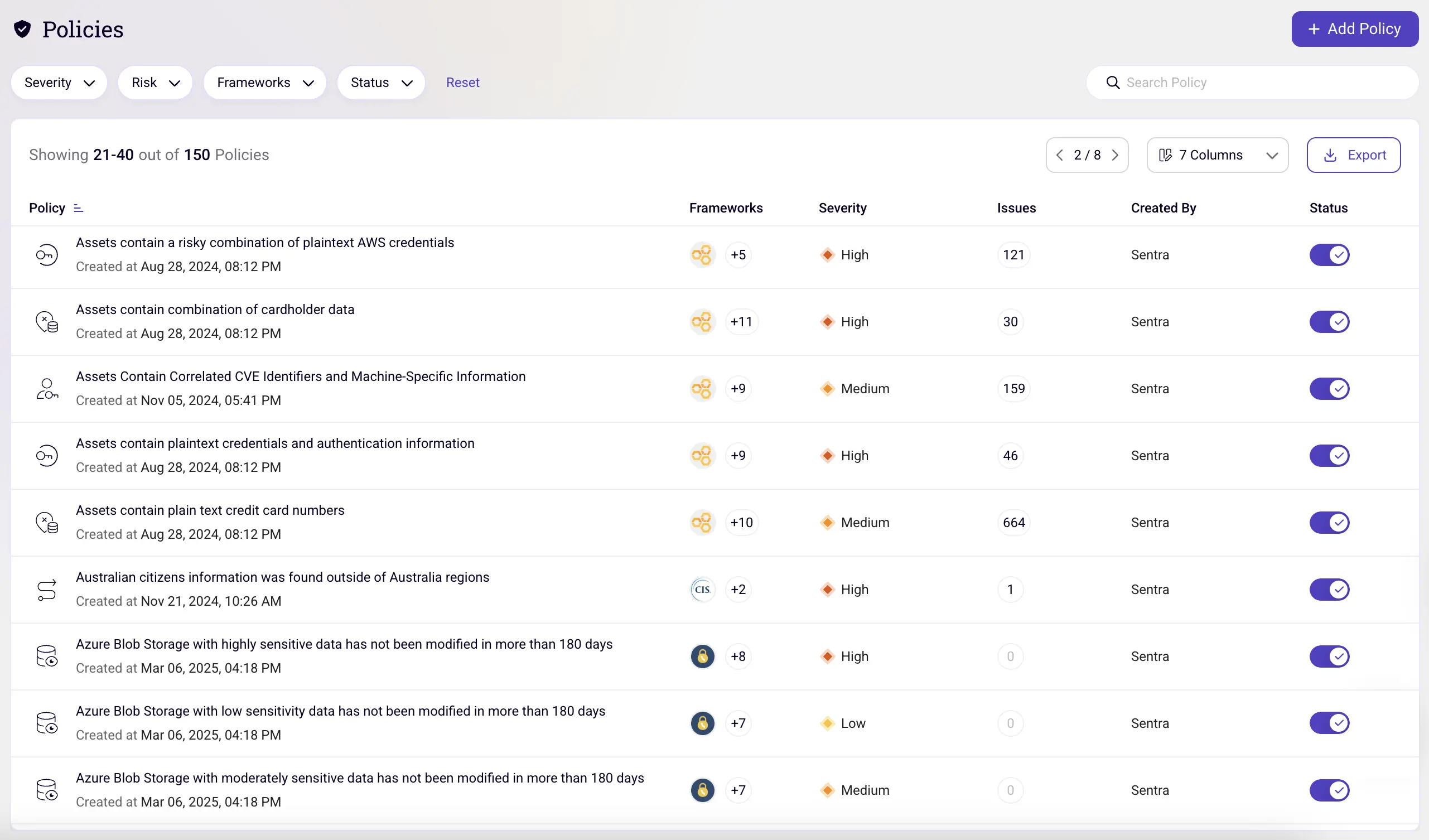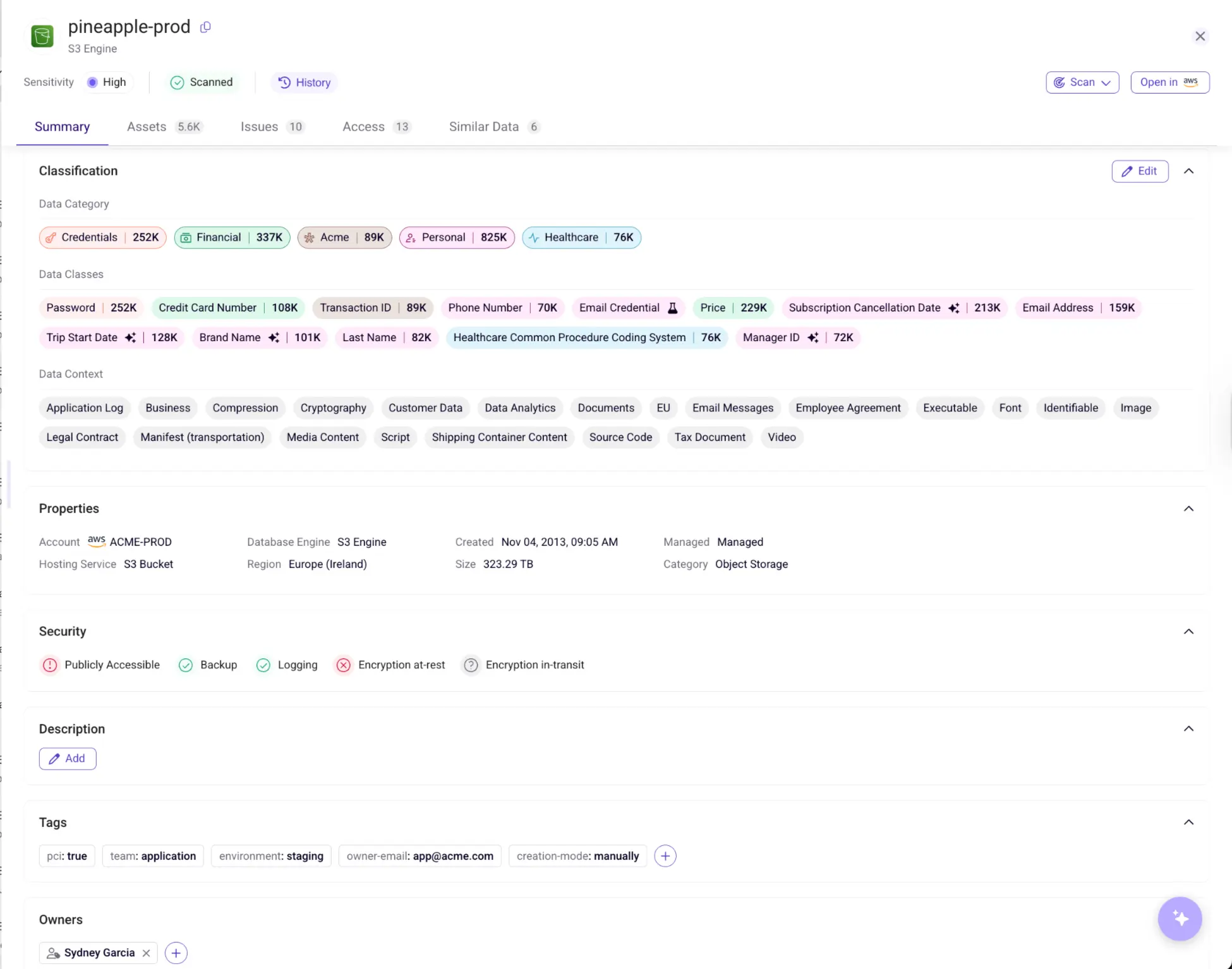Achieving Exabyte Scale Enterprise Data Security
The Growing Challenge for Enterprise Data Security
Enterprises are facing a unique set of challenges when it comes to managing and protecting their data. From my experience with customers, I’ve seen these challenges intensify as data governance frameworks struggle to keep up with evolving environments. Data is not confined to a single location - it’s scattered across different environments, from cloud platforms to on-premises servers and various SaaS applications. This distributed and siloed data stores model, while beneficial for flexibility and scalability, complicates data governance and introduces new security and privacy risks.
Many organizations now manage petabytes of constantly changing information, with new data being created, updated, or shared every second. As this volume expands into the hundreds or even thousands of petabytes (exabytes!), keeping track of it all becomes an overwhelming challenge.
The situation is further complicated by the rapid movement of data. Employees and applications copy, modify, or relocate sensitive information in seconds, often across diverse environments. This includes on-premises systems, multiple cloud platforms, and technologies like PaaS and IaaS. Such rapid data sprawl makes it increasingly difficult to maintain visibility and control over the data, and to keep the data protected with all the required controls, such as encryption and access controls.
The Complexities of Access Control
Alongside data sprawl, there’s also the challenge of managing access. Enterprise data ecosystems support thousands of identities (users, apps, machines) each with different levels of access and permissions. These identities may be spread across multiple departments and accounts, and their data needs are constantly evolving. Tracking and controlling which identity can access which data sets becomes a complex puzzle, one that can expose an organization to risks if not handled with precision.
For any enterprise, having an accurate, up-to-date view of who or what has access to what data (and why) is essential to maintaining security and ensuring compliance. Without this visibility and control, organizations run the risk of unauthorized access and potential data breaches.
The Need for Automated Data Risk Assessment
In today’s data-driven world, security analysts often discover sensitive data in misconfigured environments—sometimes only after a breach—leading to a time-consuming process of validating data sensitivity, identifying business owners, and initiating remediation. In my work with enterprises, I’ve noticed this process is often further complicated by unclear ownership and inconsistent remediation practices.
With data constantly moving and accessed across diverse environments, organizations face critical questions:
- Where is our sensitive data?
- Who has access?
- Are we compliant?
Addressing these challenges requires a dynamic, always-on approach with trusted classification and automated remediation to monitor risks and enforce protection 24/7.
The Scale of the Problem
For enterprise organizations, scale amplifies every data management challenge. The larger the organization, the more complex it becomes to ensure data visibility, secure access, and maintain compliance. Traditional, human-dependent security approaches often struggle to keep up, leaving gaps that malicious actors exploit. Enterprises need robust, scalable solutions that can adapt to their expanding data needs and provide real-time insights into where sensitive data resides, how it’s used, and where the risks lie.
The Solution: Data Security Platform (DSP)
Sentra’s Cloud-native Data Security Platform (DSP) provides a solution designed to meet these challenges head-on. By continuously identifying sensitive data, its posture, and access points, DSP gives organizations complete control over their data landscape.
Sentra enables security teams to gain full visibility and control of their data while proactively protecting against sensitive data breaches across the public cloud. By locating all data, properly classifying its sensitivity, analyzing how it’s secured (its posture), and monitoring where it’s moving, Sentra helps reduce the “data attack surface” - the sum of all places where sensitive or critical data is stored.
Based on a cloud-native design, Sentra’s platform combines robust capabilities, including Data Discovery and Classification, Data Security Posture Management (DSPM), Data Access Governance (DAG), and Data Detection and Response (DDR). This comprehensive approach to data security ensures that Sentra’s customers can achieve enterprise-scale protection and gain crucial insights into their data. Sentra’s DSP offers a distinct layer of data protection that goes beyond traditional, infrastructure-dependent approaches, making it an essential addition to any organization’s security strategy. By scaling data protection across multiple clouds and on-premises, Sentra enables organizations to meet the demands of enterprise growth and keep up with evolving business needs. And it does so efficiently, without creating unnecessary burdens on the security teams managing it.
.webp)
How a Robust DSP Can Handle Scale Efficiently
When selecting a DSP solution, it's essential to consider: How does this product ensure your sensitive data is kept secure no matter where it moves? And how can it scale effectively without driving up costs by constantly combing through every bit of data?
The key is in tailoring the DSP to your unique needs. Each organization, with its variety of environments and security requirements, needs a DSP that can adapt to specific demands. At Sentra, we’ve developed a flexible scanning engine that puts you in control, allowing you to customize what data is scanned, how it is tagged, and when. Our platform incorporates advanced optimization algorithms to keep scanning costs low without compromising on quality.
Priority Scanning
Do you really need to scan all the organization’s data? Do all data stores and assets hold the same priority? A smart DLP solution puts you in control, allowing you to adjust your scanning strategy based on the organization's specific priorities and sensitive data locations and uses.
For example, some organizations may prioritize scanning employee-generated content, while others might focus on their production environment and perform more frequent scans there. Tailoring your scanning strategy ensures that the most important data is protected without overwhelming resources.
Smart Sampling
Is it necessary to scan every database record and every character in every file? The answer depends on your organization’s risk tolerance. For instance, in a PCI production environment, you might reduce the amount of sampling and scan every byte, while in a development environment you can group and sample data sets that share similar characteristics, allowing for more efficient scanning without compromising on security.
.webp)
Delta scanning (tracking data changes)
Delta scanning focuses on what matters most by selectively scanning data that poses a higher risk. Instead of re-scanning data that hasn’t changed, delta scanning prioritizes new or modified data, ensuring that resources are used efficiently. This approach helps to reduce scanning costs while keeping your data protection efforts focused on what has changed or been added. A smart DLP will run efficiently and prioritize “new data” over “old data”, allowing you to optimize your scanning costs.
On-Demand Data Scans
As you build your scanning strategy, it is important to keep the ability to trigger an immediate scan request. This is handy when you’re fixing security risks and want a short feedback loop to verify your changes.
This also gives you the ability to prepare for compliance audits effectively by ensuring readiness and accurate and fresh classification.

Balancing Scan Speed and Cost
Smart sampling enables a balance between scan speed and cost. By focusing scans on relevant data and optimizing the scanning process, you can keep costs down while maintaining high accuracy and efficiency across your data landscape.
Achieve Scalable Data Protection with Cloud-Native DSPs
As enterprise organizations continue to navigate the complexities of managing vast amounts of data across multiple environments, the need for effective data security strategies becomes increasingly critical. The challenges of access control, risk analysis, and scaling security efforts can overwhelm traditional approaches, making it clear that a more automated, comprehensive solution is essential. A cloud-native Data Security Platform (DSP) offers the agility and efficiency required to meet these demands.
By incorporating advanced features like smart sampling, delta scanning, and on-demand scan requests, Sentra’s DSP ensures that organizations can continuously monitor, protect, and optimize their data security posture without unnecessary resource strain. Balancing scan frequency, sensitivity and cost efficiency further enhances the ability to scale effectively, providing organizations with the tools they need to manage data risks, remain compliant, and protect sensitive information in an ever-evolving digital landscape.
If you want to learn more, talk to our data security experts and request a demo today.
<blogcta-big>










.webp)

.webp)




